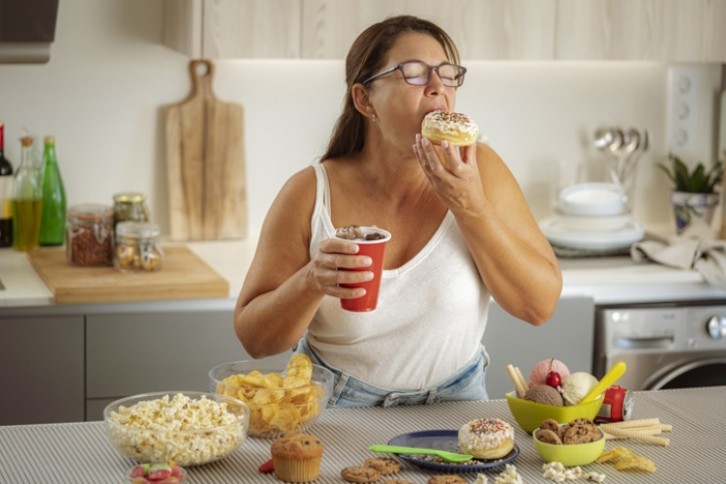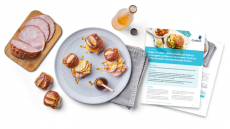Psychology of snacking: Just how important is the multisensory engagement?

Snacking, although a seemingly straightforward act is in fact governed by a complex interplay of sensory experiences, physiological responses and psychological factors. And for producers, understanding these intricacies is essential to meet evolving consumer needs and preferences.
The demand for convenience and the rapidly shifting landscape of dietary trends – especially the dramatic rise in health-consciousness – require a deep exploration of how snacks are perceived, chosen and consumed.
A new report from graze and TV psychologist Kimberley Wilson reveals the UK as a nation of ‘paradoxical snackers’. Despite 67% preferring unhealthy snacks, only 16% feel happy after consuming them, while 43% feel happier after eating healthy snacks. Negative emotions like guilt (27%) and regret (19%) are common after unhealthy snacking, especially among women.
“The composition of certain foods can measurably affect how they make us feel,” said Wilson.
“Humans have an inbuilt preference for sugar as part of our evolutionary drive to survive and because our very hungry brains run on glucose. For this reason sugar, especially in combination with fat, is linked to hedonic hunger, the drive to eat for the sake of pleasure rather than the need to take on nutrients.
“On top of the innate pleasure for certain foods and flavors, we learn how to feel about food from the people and food culture that surrounds us. When desirable foods are couched in moral language (‘bad’, ‘forbidden’ ‘guilty pleasure’) as they so often are, we may begin to inappropriately use these labels on ourselves.”
The first contact
The relationship between consumers and snacks begins with sensory stimulation, one of the most powerful drivers of food choice and enjoyment. The sensory attributes of snacks – taste, smell, texture and visual appeal – play a crucial role in their desirability.
The time it takes for a consumer to decide to purchase a product off the supermarket shelf is remarkably short, with research suggesting the decision is often made within seven to 13 seconds. This brief window underscores the importance of effective packaging design, clear branding, and strategic product placement.
Once ‘bitten’ to purchase, the next factor to entice the consumer is texture: whether crispy, crunchy, chewy or smooth, all will evoke a specific emotional response. A crispy snack tends to be associated with feelings of satisfaction and indulgence, while smoother textures may conjure feelings of comfort and relaxation.
As the snack enlivens tastebuds, flavor is thrown into the mix – counted as the most important driver of consumer loyalty and repeat sales. The combination of sweet, salty, sour and umami flavors can trigger cravings, especially when a snack satisfies multiple taste receptors at once. Research shows that consumers are drawn to snacks offering complex, layered flavors that stimulate multiple senses and heighten the pleasure of eating.
“Ultimately, taste is the most straight-forward way for your brain and body to make a food choice,” said Wilson in her report.
“If a food tastes good it will often make us feel good. Even better if the food that tastes good and feels good is nourishing too.”
The interplay between taste and aroma further enhances the snacking experience, with smell often inducing memories and emotions, creating a lasting connection with the product.
Focusing on the sensory dimensions of snacks offers a clear competitive advantage. By fine-tuning product formulations to maximize sensory appeal, producers will create snacks that will deeply resonate. Moreover, the ability to adjust factors such as crunchiness or aroma will influence snack acceptance and surprisingly, even portion control. Ticking the sensory needs can prompt the feeling of satisfaction more quickly.
The body’s reaction
Snacking triggers a series of physiological responses that influence consumer behavior, often at a subconscious level. One of the most significant physiological drivers is the brain's reward system, particularly the release of dopamine – the neurotransmitter associated with pleasure. When consumers indulge in a highly palatable snack, the brain rewards them with a surge of the hormone, reinforcing the desire to repeat the behavior. This is particularly prevalent in snacks high in sugar, salt and fat, which the body craves due to evolutionary survival mechanisms.
Another crucial factor is the glycemic response. Snacks high in refined carbs and sugars can cause rapid spikes in blood sugar levels, leading to quick energy boosts. However, this is typically followed by crashes, which often result in increased hunger and further snacking. In contrast, snacks high in protein or fiber can moderate blood sugar levels, providing sustained energy and promoting a longer feeling of fullness.
For those in the better-for-you-space, understanding how snacks affect the body is vital.
Shoppers are increasingly seeking products that align with their health goals, focusing on high-protein, low-sugar and plant-based ingredients. Functional snacks – offering added benefits like probiotics, vitamins and antioxidants – are gaining popularity, too. Clean labelling, transparent sourcing and using natural ingredients are also biggies, especially as snacks are being tarred with the controversial ultra-processed foods (UPFs) brush.
Emotions, habits and the environment
Eating isn’t purely a matter of hunger; it’s often driven by emotional states, habits and social contexts.
Emotional eating, for example, is a well-documented phenomenon where individuals turn to snacks for comfort, stress relief or boredom. In these cases, snacks serve as coping mechanisms, evoking positing emotions and providing immediate gratification.
According to graze’s research, the most popular reason that people cited was ‘to relax and unwind’ (be it alone or with someone else) while watching TV (41%). Following that were boredom (38%), to carry them over until the next meal (36%), to indulge (36%) and to cheer up (34%).
Common triggers, however, were simply having snacks to hand (36%), talking about food (29%) and watching others eat (25%).
The great snack injustice
There is a widespread misperception that healthier foods cannot be tasty, too. In fact, according to graze’s research, 67% of the 2,000 Brits polled believe a snack that tastes good can’t be good for them.
Wilson quashes the perception, noting, “We should be able to do it all: to eat delicious, satisfying foods that also provide our brains and bodies with essential nutrition that we can feel good about.
“The challenge is overcoming much of the social conditioning from a lifetime of food marketing that says that delicious = indulgent (usually meaning high in salt, fat and sugar). But what if fresh could mean bright, fresh flavors? Or if our sweet ‘pick me up’ comes with extra fiber without compromising taste? The more opportunity people have to choose delicious and nutritious foods, the easier it will be to make healthier snack choices.”
“Our brains are acutely sensitive to ‘food cues’ (references to food and signals of opportunities to eat) in the environment. Our brains want to make sure we have enough energy on board ‘just in case’,” said Wilson.
“We see this in the report with one in three (34%) of us saying just the sight of food in a shop can trigger a desire to snack.”
Packaging and presentation also exert a profound psychological influence. Studies show color, shape and size of packaging affect perceptions of a snack’s quality. Bright, vibrant colors are associated with energy and indulgence, while earthy, minimalist tones appeal to the health-conscious.
The concept of the ‘healthy halo’ can also affect snacking behavior. Products labeled as organic, gluten-free or natural may lead consumers to overestimate their health benefits, which can result in overconsumption despite the product’s actual nutritional content.
The formation of snacking habits is another crucial psychological factor. Snacks are increasingly being integrated into daily routines. The ritual of pairing morning coffee with a granola bar or having biscuits with afternoon tea is now the norm, leading to regular, repeat purchases. So, it goes without saying that understanding these behaviors can help producers position their products as part of a consumer’s daily routine.
Offering portion-controlled or single-serve options also appeals to those seeking convenience and guilt-free indulgence.



























